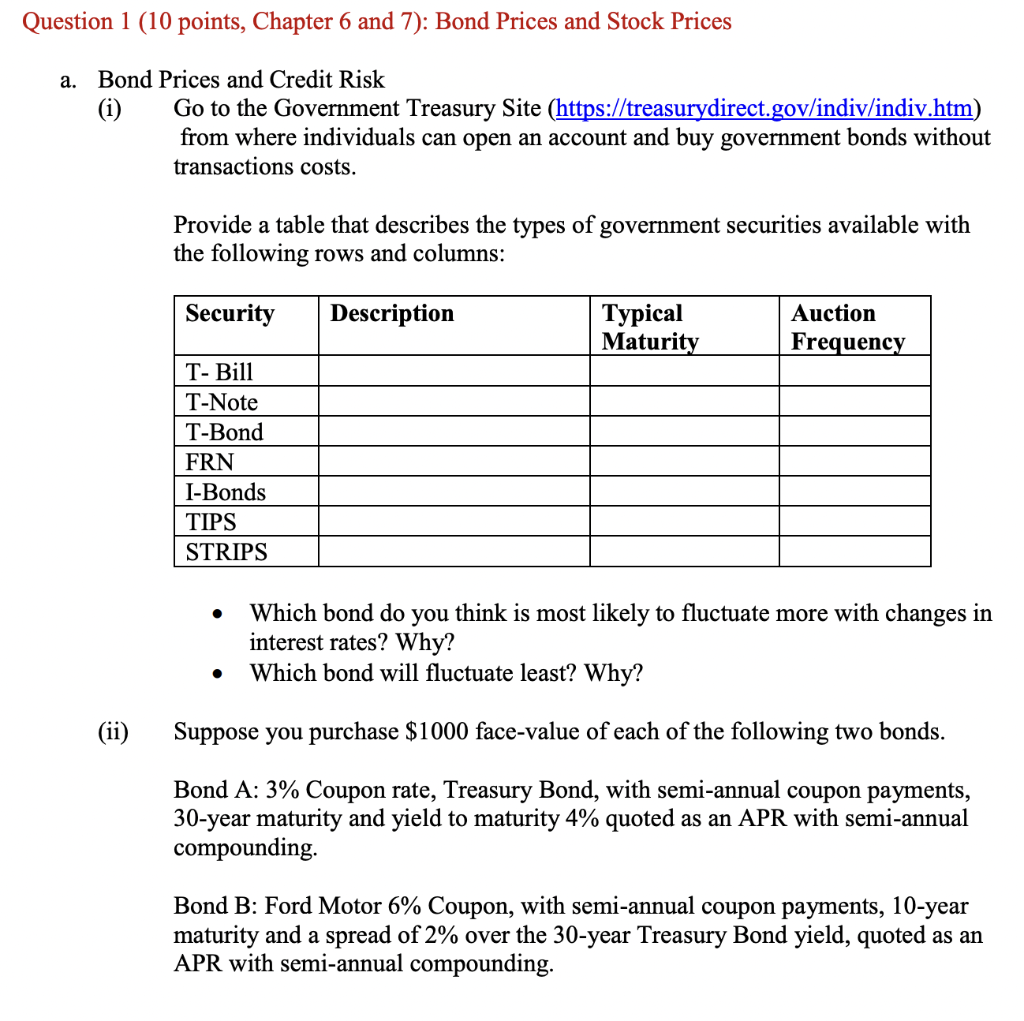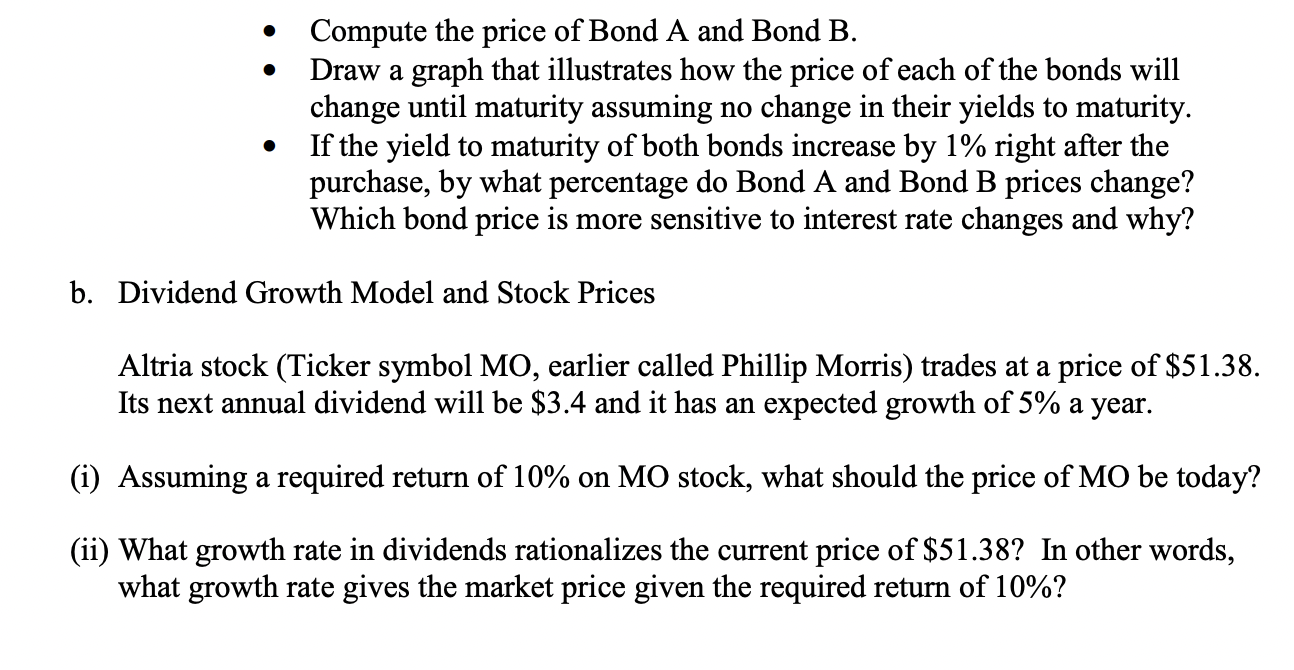

Question 1 (10 points, Chapter 6 and 7): Bond Prices and Stock Prices a. Bond Prices and Credit Risk (i) Go to the Government Treasury Site (https://treasurydirect.gov/indiv/indiv.htm) from where individuals can open an account and buy government bonds without transactions costs. Provide a table that describes the types of government securities available with the following rows and columns: Security Description Typical Maturity Auction Frequency T- Bill T-Note T-Bond FRN I-Bonds TIPS STRIPS Which bond do you think is most likely to fluctuate more with changes in interest rates? Why? Which bond will fluctuate least? Why? (ii) Suppose you purchase $1000 face-value of each of the following two bonds. Bond A: 3% Coupon rate, Treasury Bond, with semi-annual coupon payments, 30-year maturity and yield to maturity 4% quoted as an APR with semi-annual compounding Bond B: Ford Motor 6% Coupon, with semi-annual coupon payments, 10-year maturity and a spread of 2% over the 30-year Treasury Bond yield, quoted as an APR with semi-annual compounding. . Compute the price of Bond A and Bond B. Draw a graph that illustrates how the price of each of the bonds will change until maturity assuming no change in their yields to maturity. If the yield to maturity of both bonds increase by 1% right after the purchase, by what percentage do Bond A and Bond B prices change? Which bond price is more sensitive to interest rate changes and why? b. Dividend Growth Model and Stock Prices Altria stock (Ticker symbol MO, earlier called Phillip Morris) trades at a price of $51.38. Its next annual dividend will be $3.4 and it has an expected growth of 5% a year. (i) Assuming a required return of 10% on MO stock, what should the price of MO be today? (ii) What growth rate in dividends rationalizes the current price of $51.38? In other words, what growth rate gives the market price given the required return of 10%? Question 1 (10 points, Chapter 6 and 7): Bond Prices and Stock Prices a. Bond Prices and Credit Risk (i) Go to the Government Treasury Site (https://treasurydirect.gov/indiv/indiv.htm) from where individuals can open an account and buy government bonds without transactions costs. Provide a table that describes the types of government securities available with the following rows and columns: Security Description Typical Maturity Auction Frequency T- Bill T-Note T-Bond FRN I-Bonds TIPS STRIPS Which bond do you think is most likely to fluctuate more with changes in interest rates? Why? Which bond will fluctuate least? Why? (ii) Suppose you purchase $1000 face-value of each of the following two bonds. Bond A: 3% Coupon rate, Treasury Bond, with semi-annual coupon payments, 30-year maturity and yield to maturity 4% quoted as an APR with semi-annual compounding Bond B: Ford Motor 6% Coupon, with semi-annual coupon payments, 10-year maturity and a spread of 2% over the 30-year Treasury Bond yield, quoted as an APR with semi-annual compounding. . Compute the price of Bond A and Bond B. Draw a graph that illustrates how the price of each of the bonds will change until maturity assuming no change in their yields to maturity. If the yield to maturity of both bonds increase by 1% right after the purchase, by what percentage do Bond A and Bond B prices change? Which bond price is more sensitive to interest rate changes and why? b. Dividend Growth Model and Stock Prices Altria stock (Ticker symbol MO, earlier called Phillip Morris) trades at a price of $51.38. Its next annual dividend will be $3.4 and it has an expected growth of 5% a year. (i) Assuming a required return of 10% on MO stock, what should the price of MO be today? (ii) What growth rate in dividends rationalizes the current price of $51.38? In other words, what growth rate gives the market price given the required return of 10%








